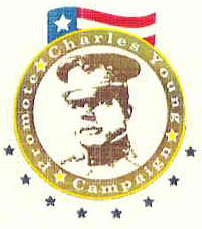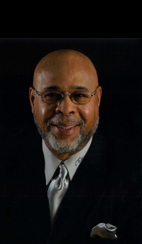By: Charles Blatcher, III
Chairman, National Veterans Coalition
The National Veterans Coalition has called on Congressman John Lewis, (D-GA) and the Congressional Black Caucus to intercede in assisting us to obtain information from the Smithsonian Institute pertaining to the National Museum of African American History and Culture. Representative Lewis is the author of the legislation passed in 2003 calling for the development and construction of the national museum.
Our coalition of Black Veterans Organizations supports a national museum project that allows Black Americans the opportunity to interpret our own history. We deserve the right to tell our own story. We have some concerns and reservations regarding the manner in which the current project has been implemented. The method eliminates the involvement of the Black Community. The current plan suggests that this project is nothing more than a means for the Smithsonian Institute to maintain control over how Black History is officially presented. There are some differences of opinion regarding the subject.
A few concerns were revealed at the February ground-breaking ceremony that was held on the Capitol Mall where the museum is to be built. First and foremost, keep in mind we are talking about a public institution. The Smithsonian Institute belongs to us all. The Capitol Mall is public property. Part of the construction is underwritten with (public money, tax dollars); however the event was closed to the public. The President of the United States and the First Lady was in attendance. However, they were not included in the symbolic act of turning the first soil to acknowledge the beginning of construction. What greater honor could have been bestowed upon the project, the Black Community and nation than to have had the first Black President of the United States and First Lady turn the soil to begin construction on the first national museum dedicated to African American History and Culture?” The exclusion raises serious questions
Page…2 Press Release
The National Museum of African American History and Culture…
about the objective of the project. Perhaps the Smithsonian leadership sensed the coming criticism following the ceremony. They issued a statement on-line explaining why the President and First Lady were not included in that part of the program. According to them, they reserved that honor for the members of the Smithsonian Family. What is that supposed to mean? Are they implying the Smithsonian Board and Advisors are more important or prestigious than the President of the United States?
We questioned why the Smithsonian Institute has virtually defied logic in excluding the Black Community’s involvement in this ambitious cultural undertaking. The Black Community has not
been allowed input in the development stage of the project, nor have there been an exerted effort to solicit funding support from the Black public. There could be a strategy for not seeking wide-spread support from the Black Community. The project has focused its fundraising emphases on major corporations. The United States Congress has committed to matching funds in the amount of $250,000,000. Indirectly the project will receive money from the Black Community byway of the tax dollars committed. The funding method allows the project to move forward bypassing the sensitivity of the Black Community because our dollars are already committed. In other words, we are picking up half the cost even if we disagree with how we have been excluded from having a voice in how we are represented in this new national institution. A few years ago, we reached out to Black Veterans and asked them to buy a Brick to support the national project. We were contacted by the National Museum of African American History and Culture and told not to have people send them money. According to them, they did not have a category to record the donations. We thought that was a bit odd when they are advertising a need for $500,000,000.
Museums are about education. The education process begins with the formulation, development and planning of the project. Every aspect of this national undertaking offers opportunities to educate the public about the importance of the history and foster public discourse around the subject. There does need to be a discussion around the subject of race in this country. The discussion could take place within the context of implementing this national project.
We have been made aware that they have limited the display space for Black Military History to 3,000 square feet. We are talking about two-hundred and forty-two years of history covering the period from the American Revolutionary War to the present. We are talking about five
Page…3 Press Release
The National Museum of African American History and Culture…
branches of the Armed Forces; the Army, Navy, Air Forces, Marine Corps and the Coast Guard formerly known as the Revenue Cutter Service. The space allotment is inadequate. It
represents less than one percent of the proposed (320,000) square feet designated for the building.
We have made the following suggestion to the Secretary of the Smithsonian Institute Mr. G. Wayne Clough: We recommended that they designate the 3000 square feet as a temporary gallery to display segments of our military history until a permanent facility can be established to properly present the subject in a more detailed manner. We have also asked some basic questions about the coming National Museum of African American History and Culture. Are all the galleries the same size (3000 square feet)? If not, what is the largest and smallest of spaces? If they differ in size, what were the determining factors as to how the spaces are allocated? Size and location is important in gallery presentations. Both emphasize the significance of the subject matter. We would like to see what if any subjects were deemed more important than the contributions we have made in the defense of this nation. Our military service is the “cornerstone” of our claim for civil rights, equal opportunities and equal protection under the law. We have asked who the scholars are providing the interpretations of our experience? Who selected them? It would be nice for the Black community to hear what is being created in our name and by whom. It would also be a gesture of respect toward the National Black Community. We have called on Congressman Lewis to facilitate a meeting with us and the Smithsonian Institute to discuss our concerns.
We are asking the Black Community to be the judge of the reasonability of our position and request pertaining to the subject. If you are incline to agree, contact your congressional representative and demand that they insist on public accountability from the Smithsonian Institute for what is being developed and created in our name.
The National Veterans Coalition can be contacted at e-mail address: cnmmmf@aol.com. or telephone area code 1-510-467-9242. Visit our web-page at: www.colonelcyoung.org and follow us on Twitter @Colyoungproject






